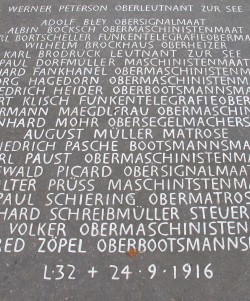
Resonance 22/10/14
Zeppelin L32.
This week’s object is a model of a Zeppelin, one of several crested china pieces in the Great War collection at the Staffordshire County Museum in Shugborough. This type of cheap, mass-produced souvenir ware was produced in Staffordshire from the mid 1880’s to just after 1930, and was at the height of its popularity during the Great War, when a vast range of patriotic and war-related items were produced, from armoured cars to battleships, submarines and aeroplanes.
German military airships first introduced the concept of aerial bombardment to war in Europe, and these silent monsters brought terror to the civilian population from 1915 onwards with their seemingly indiscriminate bombing, and were christened ‘baby-killers’ in the national press. It is perhaps surprising that an object that inspired such widespread fear and hostility should become a popular and collectable mantelpiece ornament.
The base of this piece bears the inscription ‘ Model of Zeppelin 332’, though this number does not tally with the official records, and it is more likely that it represents the R-class Super Zeppelin L32, which was one of several German airships brought down over England in the second half of the war. This particular Zeppelin was shot down by 2nd Lt. Frederick Sowrey, of the Royal Flying Corps, on the morning of 24th September 1916 following an unsuccessful raid on London, and came down at Great Burstead, near Billericay with the loss of all 22 crew. In 1966 the crew’s remains were re-interred in the German Military Cemetery on Cannock Chase, where their communal grave is commemorated with a simple and poignant tombstone of Belgian granite.
Stephen Dixon

